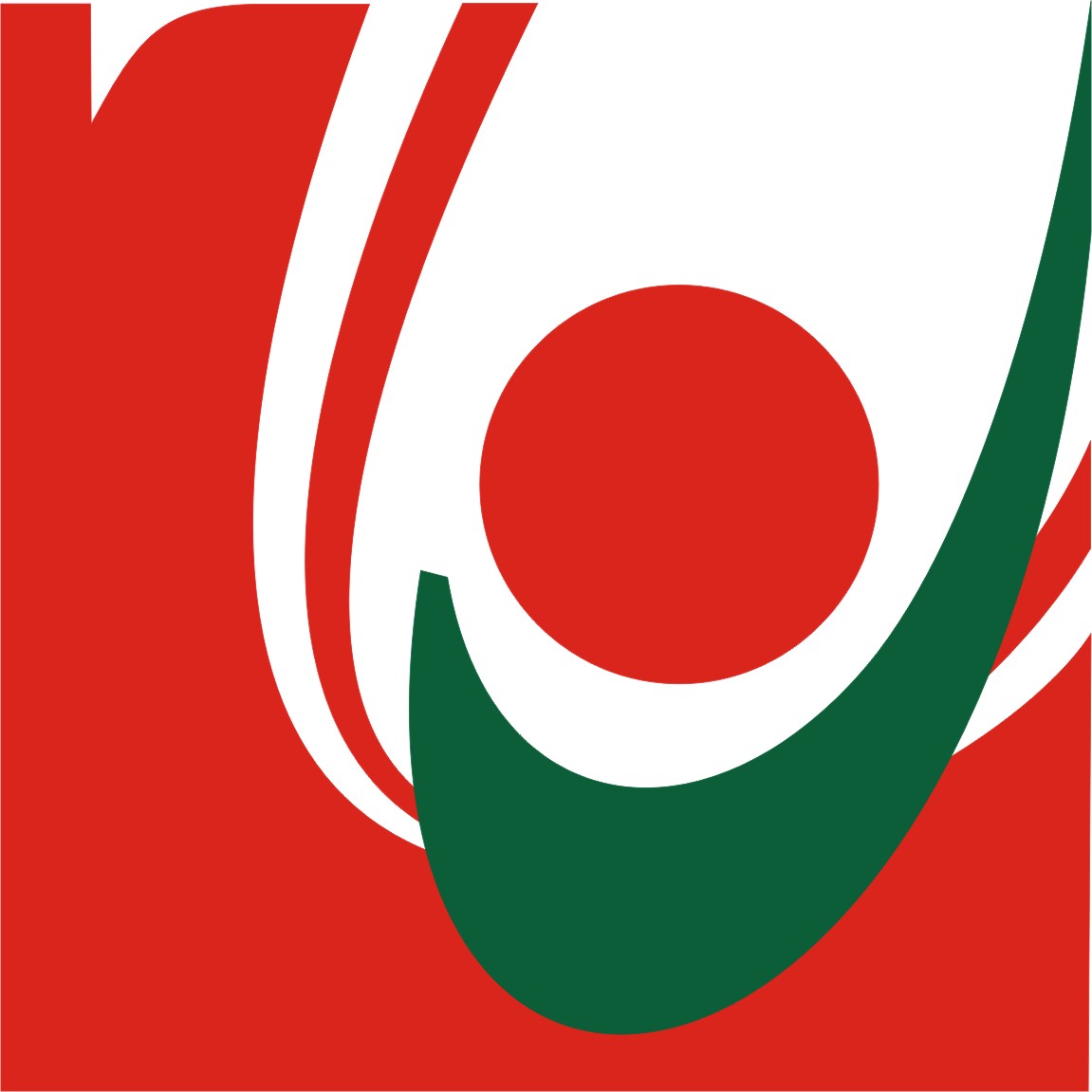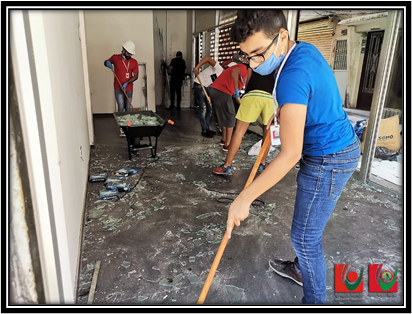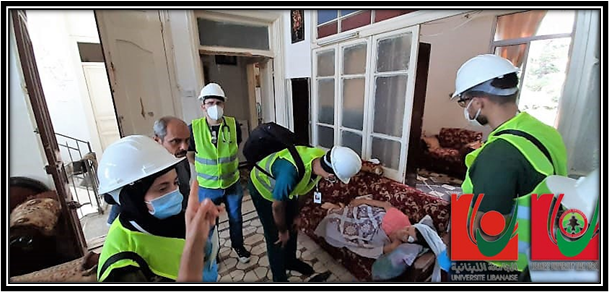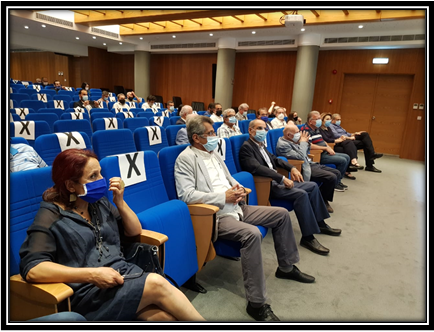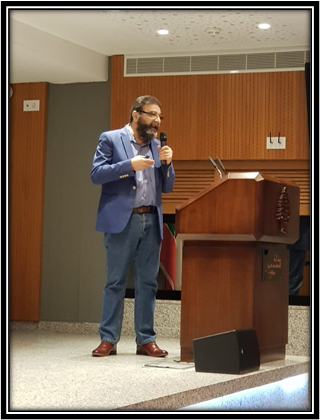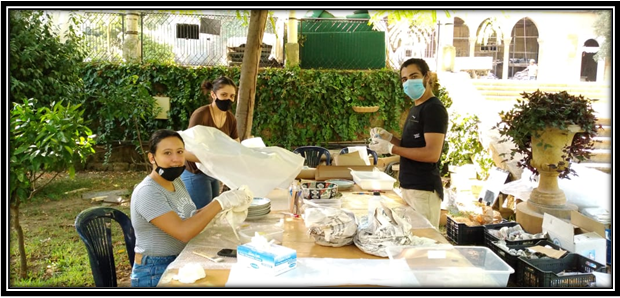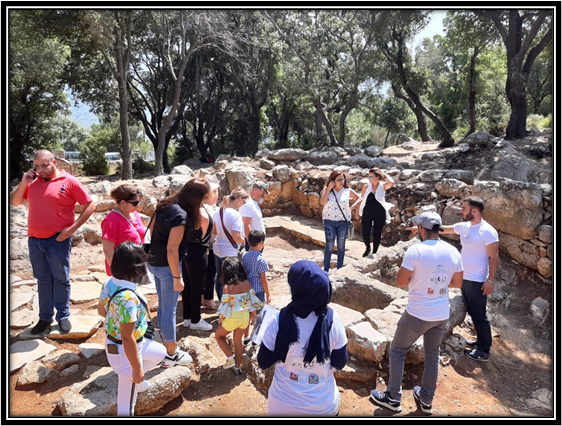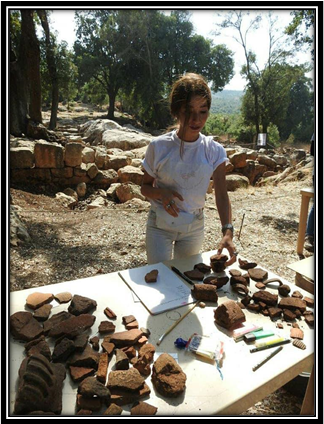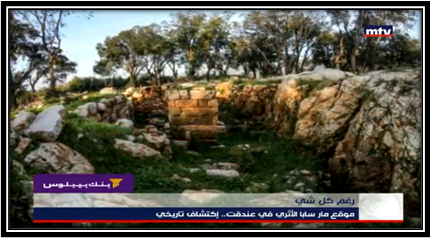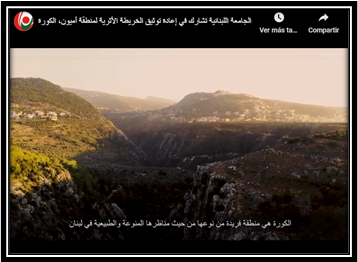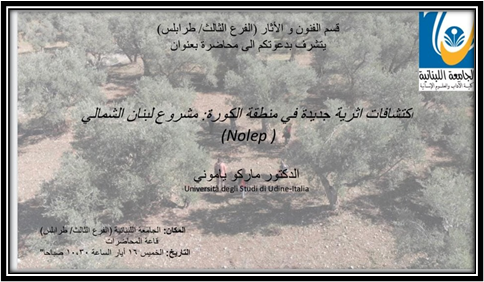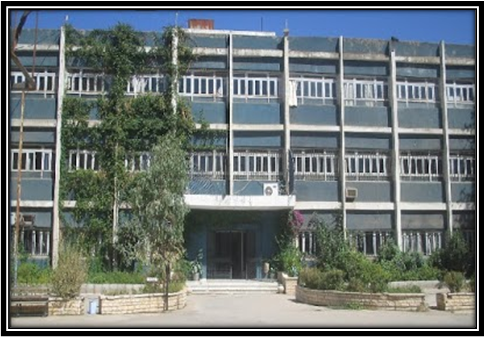11.2.6. Projects to record and/or preserve intangible cultural heritage
The Lebanese University worked to strengthen local economies by preserving the heritage of ancient cities, which is a fundamental principle of SDG 11. Through the activities of its students, projects and initiatives, the LU contributed to creating conditions for increasing local economic development and improving the quality of life in the historical centers of a number of cities, including Baalbek and Tripoli.
The restoration of some ancient monuments or the discovery of more have improved their surroundings as a place to live or visit, and companies have more investment and employment opportunities. Thus, more job opportunities are provided for the local population in the tourism sector.
Before detailing the activities of the LU faculties related to SDG 11, it is necessary to stop at the Beirut Port blast of 4 August 2020, as a painful and pivotal event that imposed an exceptional emergency plan to save the heritage of the Lebanese capital and help the affected people to stay in their city.
In this context, the Lebanese University task force (LUTF) works since August 2020 in cooperation with the DRR-Disaster Risk Reduction Department of the Lebanese Red Cross and a number of local and international organizations to reduce the effects of the explosion and its repercussions, through multiple tasks including:
Coordinating, managing and organizing the removal of debris from roads, streets and squares, and assisting people to clean their homes from the effects of the explosion;
Assisting in detecting the damage of the buildings and collecting their detailed data in preparation for their restoration or rebuilding, in cooperation with the professors of the Faculty of Fine Arts & Architecture and the engineering team of “Frontline Engineers Lebanon”;
Providing first aid, medical services and medicines for the wounded, and assisting the elderly in moving to safe places or hospitals, in cooperation between the volunteers of the Faculty of Medical Sciences and Faculty of Public Health;
Providing health guidelines regarding some medicines, including chronic drugs, and striving to secure them from donors and distribute them to those in need;
Conducting a comprehensive “psychological assessment” of the general condition of people in the affected areas and collecting data on their psychological status, through “Nehna Haddak” (We Are Beside You) initiative from the Faculty of Letters & Human Sciences.
The LU Faculty of Fine Arts & Architecture, through its Dean Professor Mohammad Al-Hajj and a number of professors, also participated in drafting the "Beirut Urban Declaration" for the reconstruction of the affected areas as a result of the Port explosion. The declaration was launched by Jad Tabet, President of the Lebanese Federation of Engineers and Architects, at the Order of Engineers and Architects, Beirut on 9 October 2020, at the invitation and organization of the Committee of Faculties of Architecture and the Associations of Architects and Engineers Specialized in Urban Planning and in partnership with the “Chaderji Foundation for Architecture and Society”.
In order to preserve Beirut memory and heritage, and in believing in the importance of the relationship that brings people closer to their personal belongings, a scientific team of professors and students of the Department of Arts & Archeology at the Faculty of Letters & Human Sciences (Branch 2) launched an initiative aimed to save the personal belongings that were damaged by the Port explosion.
The mission of the scientific team, which works under the supervision of the Head of the Department of Arts and Archeology of the Faculty, Dr. Grace Al-Homsi, focuses on helping citizens preserve their collections of books, pictures and artifacts by providing first aid. (dust-cleaning-pack) carefully and scientifically (dust removal, cleaning, packaging)
A group of professors and students from the Lebanese University – Faculty of Letters & Human Sciences (Department of Arts & Archeology) discovered new remains in Wadi Arbin in Aandqet, Akkar dating back to the Roman and Byzantine era. This discovery can re-establish a specific historical period in Akkar, which is the strategic area linking the Lebanese coast with Syria’s inland.
Under the agreement signed between the Lebanese University and the Directorate General of Antiquities (DGA) at the Ministry of Culture, the team started its work in Akkar in April 2018 under the supervision of the Head of the Department of Arts & Archeology at the Faculty (Branch 4), Dr. Joanna Shahoud. Last month, the team registered new discoveries in Wadi Arbin, consisting of two-storey ancient houses. The ground floor was used for storage and olive presses while the second floor was used for accommodation, in addition to the remains of three churches and tombs carved in the rock, pottery of ancient glass and some coins. The project, undertaken by the Lebanese University, will continue for three years, with the final phase of the project including the restoration and rehabilitation of the archaeological sites discovered.
The LU participated in the Directorate General of Antiquities in organizing an open day at the Mar Saba archaeological site in Aandqet, Akkar.
5. The Lebanese University participates in the reconstitution of Amioun archaeological map
The LU also cooperated through the Faculty of Letters & Human Sciences with “University of Udine”, Italy in the archaeological survey of Amioun, Koura.
The field work aims to redraw the archaeological map of Amioun and form a list of its documentary data, provided that the archaeological sites are utilized with the local community in sustainable development.
To shed light on the reality of archeology in North Lebanon, a lecture entitled: "New Archaeological Discoveries in Koura Region" was organized at the Faculty of Letters & Human Sciences (Branch 3).
7. Students from the Lebanese University Taking Part in Baalbeck Site Restoration.
“The general urban plan of the site and its evolution was respected in the implementation of the general circulation in the site. The roads were reopened and reused as pathway for tourists,” Abdul Massih told The Daily Star. “The ancient techniques of construction and the original building material were reused and applied as the main philosophy of the conservation work.
“Some minor additions were necessary for the security of the site and the monuments and in some case for [understanding the function] of some features,” she added.
“It is, for example, the case of the hammam [public baths] located in the western part of the Bustan, where some basins and pipes were reconstructed to give a better [notion of] the monument.”
Baalbek has been settled for almost 10,000 years and was a significant medieval center. The Zengid dynasty developed Bustan Nassif into a fortified castle and successor dynasties invested intensively in the city, using it as a border fortress against crusader kingdoms and benefiting from this economically.
“The medieval city walls were reinforced in the 12th century by the Zengid Emir Noureddine Mahmud, perhaps in reaction to the invasion of the Mongols in 1260 A.D.,” Abdul Massih said. “After the destruction by the Mongols, of which some catapult spheres still bear witness, the district was newly reconstructed in the Mamluk period [13th-14th century].
In cooperation with the Lebanese University and the Lebanese-Italian mission to excavate antiquities in the interior regions - North Lebanon and the Municipality of Amioun, the Ministry of Culture - Directorate General of Antiquities organized a photo exhibition entitled "Recent Discoveries in Antiquities and Heritage in Amioun".
The exhibition aimed to explain the results of the archaeological exploration campaigns in Amioun since 2017, during which the results of the excavations were presented by Dr. Marco Yamoni from the “University of Udine”, Italy and Dr. May Haidar from the Department of Archeology & Arts (Branch 3).
8. In order to spread environmental and scientific culture in Lebanon, the Lebanese University owns natural and archaeological museums open to the public and school students free of charge during specific days of the year, namely:
The Natural Sciences Museum at the Pierre Gemayel University Compound-Fanar
George Tohme herbarium in the Rafik Hariri University Compound – Hadath
The Museum of Natural Sciences at the Lebanese University exists since 1979 and is a scientific wing that serves as a research tool for students and researchers, and a cultural portal for the stakeholders.
Museum of Natural Sciences in the Lebanese University: a scientific wing with a national wealth importance
The museum includes a collection of samples of insects, reptiles and fossils, which the war that Lebanon had gone through had destroyed some of its contents and the remains were transferred to the Faculty of Sciences in Fanar in 1984. Before its official opening in May 2004, the museum was an insectology laboratory and part of a research project funded by the British Embassy in Beirut, as stated by Dr. Najla Zaidan, one of the Museum founders.
Dr. Zaidan said the museum's assets managed by the Department of Life Sciences and Earth at the Faculty of Sciences, include fossils and all that is related to Earth science from insects, reptiles, amphibians and stone tools used by humans two million years ago and the oldest in the Middle East. She also noted to the importance of documentary annotations alongside the exhibits (lists of names, sources and dates).
The laboratory of archeology at the Faculty of Letters and Human Sciences (Branch 2), Fanar was inaugurated in 1986 as an independent three-storey building equipped and dedicated to archaeological research. Subsequently, it was severely affected by the events of the civil war, which inflicted enormous damage during more than twenty years.
The purpose of the laboratory was to enable students to practice and develop their theoretical knowledge (description, classification, conservation, etc.) under the supervision of their professors. Thus, future generations of archeology researchers had to be forged in this academic setting. At that time, the activity was sporadic following the pace of the war in very difficult conditions, including the lack of funding. Nevertheless, the collections kept were enriched with various archaeological objects (coins, ceramics and flint) thanks to the generosity of some donors and researchers. By way of example, Professor Raymond Gèze and his students collected a rich amount of rock specimens in the Lebanese mountains. The tenacity of faithful enthusiasts, students, professors and researchers has made it possible, against all odds, to maintain the laboratory to date.
The premises are currently home to a very rich material from archaeological excavations undertaken by teams of the Lebanese University during the 1990s and 2000’s. Thus, the restoration, cleaning and conservation of objects (coins, ceramics, glassware, etc.) play an important role to allow experts and specialists from the Department of Art and Archeology to carry out their studies. Therefore, several archaeological research teams are housed in the laboratory to prepare the result publications of their archaeological excavations. These discoveries are also the subject of several Master theses and PhD dissertations registered at the Lebanese University.
Soil and Mineralogy Laboratories at the Faculty of Letters and Human Sciences (Branch – 3)
Soil and mineralogy labs were established at the Lebanese University - Faculty of Letters and Human Sciences (Branch 3) in 1994, and were later developed and equipped.
Professors and students of the Departments of Geography and Archeology benefit of the labs to carry out tutorials related to "Geography of Soil" and "Mineralogy".
